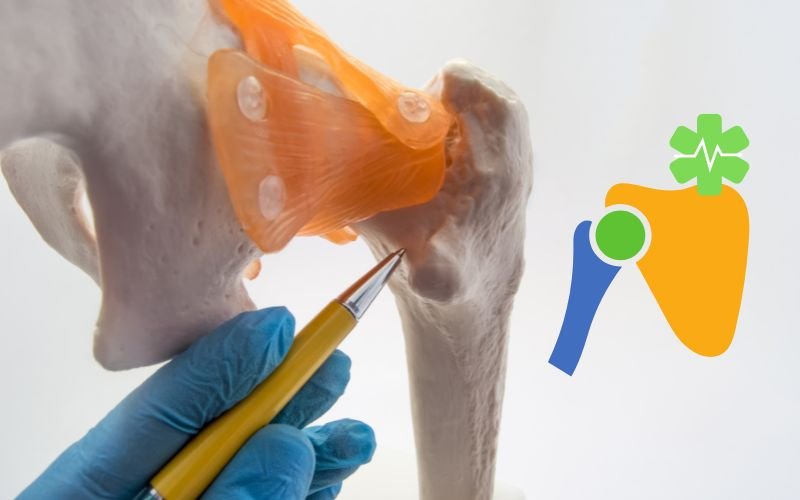Hip injuries can affect mobility and quality of life, especially for older adults. Among various treatment options, bipolar hip surgery has become a common and effective solution for addressing severe hip fractures. This blog will explain what bipolar hip surgery is, why it is performed, the procedure involved, and the benefits, risks, and costs associated with it. We will also explore terms like hip hemiarthroplasty and bipolar hip prosthesis to provide clarity for patients seeking more information.
What Is Bipolar Hip Surgery?
Bipolar hip surgery, also called hip hemiarthroplasty, is a surgical procedure to replace the damaged femoral head of the hip joint with a prosthetic device. Unlike total hip replacement, this surgery does not replace the hip socket. Instead, it focuses only on the damaged portion of the joint.
The unique feature of this procedure is the use of a bipolar hemiarthroplasty, which has two articulating surfaces. This design allows smoother movement and reduces wear and tear on the surrounding joint. This feature makes the prosthesis more durable and offers better mobility to patients compared to other types of implants.
Why Is Bipolar Hip Surgery Performed?
It is commonly recommended for patients with:
- Femoral neck fractures: These fractures occur at the narrow section of the thigh bone, just below the ball of the hip joint. This area is prone to injuries in elderly individuals or those with weakened bones.
- Displaced fractures: When the femoral head loses its blood supply due to injury, it cannot heal independently. Surgery becomes necessary to restore function.
- Degenerative conditions: Conditions like arthritis can weaken the joint, making it susceptible to fractures.
How Does a Bipolar Hip Prosthesis Work?
The bipolar hemiarthroplasty is a two-part device consisting of:
- Inner Bearing: This part allows the prosthetic head to move within a lined shell. It reduces stress on the natural acetabulum (hip socket).
- Outer Bearing: This interfaces with the natural joint socket and mimics the movement of the hip.
The dual-bearing design reduces friction and makes the prosthesis long-lasting. It also minimizes the risk of complications like hip dislocation, which is more common in other types of implants.
Procedure of the Surgery
Here is a breakdown of what happens during bipolar hip surgery:
- Anaesthesia: The patient receives general anaesthesia (complete unconsciousness) or spinal anaesthesia (numbing the lower body).
- Incision: The surgeon makes a small incision on the side of the hip to access the joint.
- Removal of the Damaged Bone: The femoral head and neck, which are fractured or damaged, are carefully removed.
- Preparation of the Femur: The surgeon hollows out the top of the femur to make space for the prosthetic stem.
- Placement of the Bipolar Hip Prosthesis: The prosthetic stem is inserted into the femur and secured using either bone cement or a press-fit design. The artificial head is then attached to complete the prosthesis.
- Stability Check: The surgeon makes sure the prosthetic head fits well and allows smooth movement.
- Closure: The incision is closed with sutures, and a drain may be placed temporarily to remove excess fluid.
The procedure usually takes 1–2 hours, and patients can start rehabilitation shortly after.
Recovery After Hip Hemiarthroplasty
Recovery from hip hemiarthroplasty involves several stages:
- Hospital Stay: Patients stay there for 3–5 days. During this time, they start physical therapy to regain mobility.
- Pain Management: Painkillers and anti-inflammatory medications help manage discomfort.
- Rehabilitation: Physiotherapy focuses on strengthening the hip and improving balance. Patients are encouraged to stand and walk with support within 24–48 hours after surgery.
- Home Precautions: Patients should avoid bending or twisting the hip, crossing their legs, or sitting on low chairs for at least 6 weeks.
Most patients regain their independence and return to daily activities within 6–8 weeks. Full recovery may take up to 3 months.
Benefits of Bipolar Hip Surgery
Bipolar hip surgery offers several advantages:
- Reduced Wear and Tear: The dual-bearing prosthesis minimizes friction, extending the implant’s life.
- Improved Mobility: Patients can resume walking and other activities sooner than surgical.
- Less Invasive: The surgery focuses only on the damaged femoral head, reducing complications and recovery time.
- Cost-Effective: Compared to total hip replacement, this procedure is often less expensive while delivering excellent results.
Risks and Complications
As with any surgery, bipolar hip surgery carries some risks, including:
- Blood Clots: Clots may form in the legs or pelvis after surgery. Doctors prescribe blood thinners to reduce this risk.
- Infection: Antibiotics are given before and after surgery to prevent infections.
- Dislocation: Although rare, the artificial joint may dislocate, requiring additional treatment.
- Nerve or Vessel Injury: This is uncommon but can occur during the operation.
- Mortality Rate: For elderly patients with multiple health conditions, the mortality rate can be as high as 15–36% in the first year following hip fractures.
Despite these risks, the success rate of the surgery remains high, with most patients reporting notable improvements in mobility and quality of life.
Bipolar Hip Surgery vs. Total Hip Replacement
Both procedures aim to restore hip function, but they differ in scope:
- Bipolar Hip Surgery: Focuses on replacing the femoral head only. It is less invasive, more affordable, and has a shorter recovery period.
- Total Hip Replacement (THR): Replaces the femoral head and the hip socket. It is ideal for younger, more active patients but has a higher risk of dislocation and longer recovery time.
Bipolar Hip Surgery Cost in India
The cost of bipolar hip surgery in India is lower compared to many Western countries, making it a popular choice for medical tourism. The average cost ranges from ₹3.00 lakhs to ₹3.50 lakhs, depending on factors like:
- The hospital and its location.
- The surgeon’s expertise.
- The type of prosthesis used.
- The patient’s overall health and additional medical needs.
This affordability and high-quality medical care make India an excellent destination for hip hemiarthroplasty.
Bipolar hip surgery is a proven and effective treatment for femoral neck fractures, particularly in elderly patients. By replacing the damaged part of the joint with a bipolar hip prosthesis, this surgery restores mobility, reduces pain, and enhances the patient’s quality of life. With affordable bipolar hip surgery cost options, patients can access high-quality care without financial strain. If you or a loved one is considering hip hemiarthroplasty, consult a qualified orthopaedic surgeon at The Bone Clinic to understand your options and create a tailored treatment plan.




